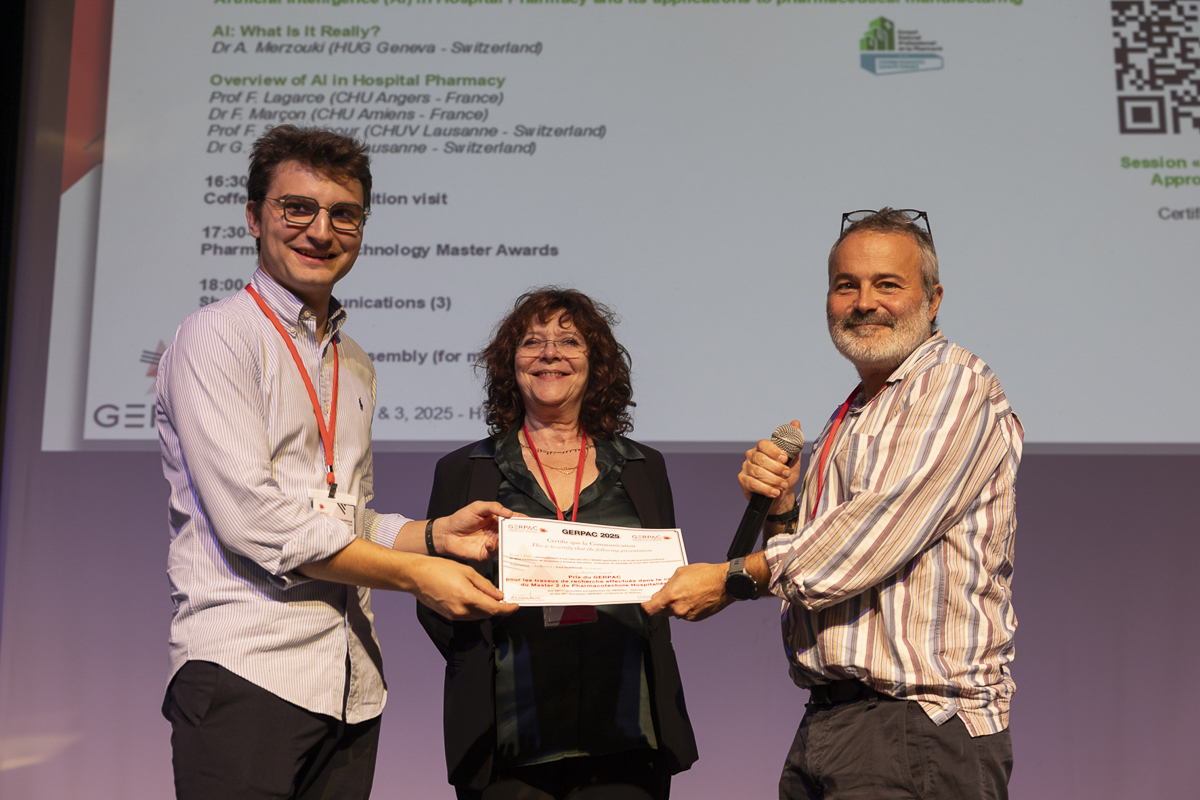Development of an UPLC–MS/MS method applied to a pharmacokinetic study of two discoidin domain receptor inhibitors: assessment of blood–brain barrier penetration
2 October 2025
P. Gueroue1, A. Burban2, A. Sharanek3, G. Bouguéon1,6, S. Bouchet4,5, D. Ducint4, M. Molinard4,5, S. Djabarouti1,3 and J. Guyon3,4,71 Department of Pharmacy, CHU Bordeaux, F-33604 Pessac, France
2 Univ. Bordeaux, CNRS, IBGC, UMR5095, F-33000 Bordeaux, France
3 Univ. Bordeaux, INSERM, BRIC, UMR1312, F-33000 Bordeaux, France
4 Department of Medical Pharmacology, CHU Bordeaux, F-33000 Bordeaux, France
5 Univ. Bordeaux, INSERM, BPH, UMR1219, F-33000 Bordeaux, France
6 Univ. Bordeaux, INSERM, ARNA laboratory, UMR1212, CNRS, ChemBioPharm, UMR5320, F-33000 Bordeaux, France
7 Department of Biochemistry, CHU Bordeaux, F-33000 Bordeaux, France
Discoidin domain receptor 2 (DDR2) has emerged as a novel pharmacological target in glioblastoma, owing to its overexpression in cancer cells. Two tyrosine kinase inhibitors, WRG-28 and DDR2-IN-1, selectively target this receptor. Their therapeutic efficacy hinges on blood–brain barrier (BBB) penetration, yet the lack of analytical methods has left pharmacokinetic data and BBB permeability profiles largely unexplored. In this study, an UPLC-MS/MS method was developed for the simultaneous quantification of WRG-28 and DDR2-IN-1 in plasma and mouse brain, following the European Medicines Agency guidelines. Analytes were extracted through simple protein precipitation using methanol, succeeded by lipid removal. They were separated via liquid chromatography with water containing 0.05% formic acid and acetonitrile with formic acid 0.1%, as the mobile phase for gradient elution. Positive electrospray ionization was conducted, coupled with multiple reaction monitoring at m/z 411.1→134.1 and 411.1→198.1 for WRG-28, and 526.2→255.1 and 526.2→72.1 for DDR2-IN-1, respectively. Most of validation criteria were met, including selectivity, specificity, linearity, precision and accuracy, dilution integrity, stability and reinjection reproducibility. The calibration range was linear from 1 to 1000 ng/mL for both compounds. The method was successfully validated and applied for preclinical pharmacokinetic studies. It allowed the assessment of BBB penetration of the two DDR2 inhibitors.

